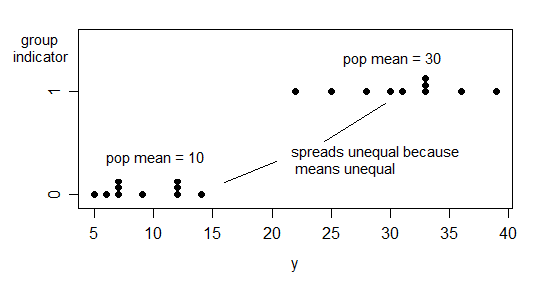Forget GLMs for a second. Imagine you have measured some count variable for individuals across two groups, where the counts in each group are distributed as Poisson.
The first has population mean $\lambda_1$, and the second has population mean $\lambda_2$.
Is the variance the same for the two groups? No. The variance is constant when you keep $\lambda$ the same (stay in the same group) but if you move across to the other group, both the mean and variance change (naturally, since the variable is Poisson-distributed, so the population variance is identical to the mean).
This is actually the simplest case* of Poisson regression.
For a Poisson regression $\text{Var}(Y_i|\mathbf{x}_i) = \lambda_i$ (where $\lambda_i$ is a function of $\mathbf{x}_i\beta$), so the Poisson mean is different at different values of the predictors. Because the Poisson mean changes, of course the variance must change with it (since the variance is equal to the mean).
Considerations are similar for other GLMs- because the variance is related to the parameter that determines the mean, when the mean changes, the variance will change with it.
* well, aside the trivial case of no contributing regressors at all (i.e. constant term only)

